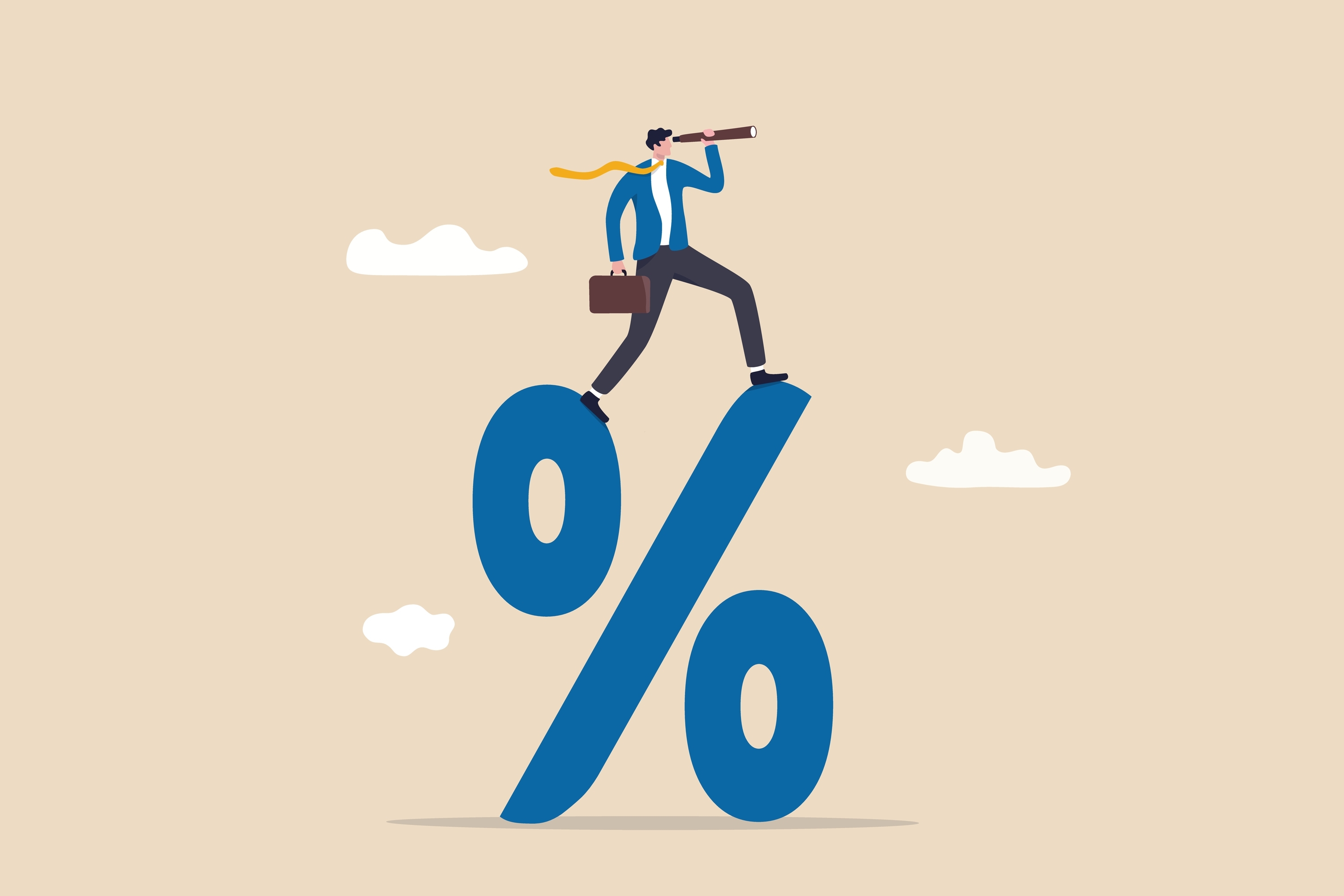TLDR
-
Low interest rates present both opportunities and challenges for investors. The key is to find strategies that help you make the most of the environment while remaining true to your long-term investing goals and strategy.
-
There are different investment approaches to consider depending on whether you’re investing for the short term or the long term.
-
Diversification can help investors hedge against fluctuating interest rates.
-
It’s difficult to predict where interest rates will go in the future, but staying informed, flexible and adaptive can help you — and your portfolio — be prepared for what’s next.
For Canadians with mortgages, loans or lines of credit, a low-interest rate environment can be a welcome relief. But what does it mean for investors? While some might assume that lower rates automatically lead to lower investment returns, that’s not necessarily the case. Rather, lower interest rates present unique opportunities for investors — the key is to position your investments to take advantage of them.
What do low interest rates mean?
Interest rates are set by the central banks, such as the Bank of Canada (BoC). The policy rate (also known as a benchmark rate or overnight rate) is announced on eight fixed days each year. The rate is set in response to a variety of economic factors, such as inflation, employment and global economic conditions. With far-reaching impacts on the economy, the rise and fall of interest rates affect consumers, businesses and the government in distinct and meaningful ways.
Defining low interest rates
Canada today is in a low-interest rate environment. But what does that mean? Whether an interest rate is high or low is relative — both to historical averages and to similar economies around the world. For instance, in Canada, rates above 5.00% were common before 2008. Meanwhile, in 2020 and 2021, they were as low as 0.25%. Through 2022 and 2024, they rose steadily to 5.00%. Today’s environment sees interest rates hovering around 2% lower than they were a year ago.
The current state of interest rates in Canada
Over the last year, the Bank of Canada has steadily cut interest rates in an effort to stimulate economic growth and curb inflation. As such, Canada finds itself in a low interest rate environment today.
How can low interest rates affect investments?
Low interest rates can have both positive and negative effects on investments — and the impact of rates on your portfolio will depend on the type of assets you hold as well as your investment strategy.
The positive effect of low interest rates:
- Low interest rates mean borrowing rates come down for businesses. This environment tends to stimulate increased investment and potentially higher earnings, which can boost stock prices
- Lower mortgage rates tend to stimulate the real estate market, increasing property prices and real estate investment
- Low rates also make it easier for startups and private businesses to grow, potentially boosting returns for those investing in private market alternatives
The downfall of low interest rates:
- Fixed income investments (such as bonds and GICs) may offer more modest returns
- Investors with pension funds, annuities and other insurance products could experience lower returns while rates remain low
What are the advantages of lower interest rates?
The main upside to lower interest rates is that it means a lower cost of borrowing for consumers and businesses. This leads to more spending and in turn, more economic growth and activity, driving up stock prices and stimulating the real estate market. Job creation tends to follow, adding to positive economic momentum.
What are the disadvantages of lower interest rates?
One downside of lower interest rates is that they reduce returns on fixed-income investments, which can affect retirees and conservative investors who rely on passive income. Easier access to credit may also encourage consumers to take on too much debt, increasing financial risk. Over a longer term, if low rates drive excessive demand, inflation can rise, making everyday goods and services more expensive. A prolonged period of lower rates can also weaken the currency, affecting Canadians’ purchasing power and international trade.
Predicting future interest rate trends
It’s difficult to predict where interest rates will go, but because they are influenced by external factors, staying informed can help you understand where interest rates are headed.
What influences interest rate changes?
- Inflation is the biggest factor: If inflation is too high, the Bank of Canada raises interest rates to cool down spending; if inflation is low, they lower rates to boost consumer demand
- Economic growth: If the economy slows down, rates are cut to encourage borrowing
- Global interest rate trends: Canada often follows U.S. activity
- Government spending: For instance, massive spending during the pandemic led to high inflation, leading to rate hikes in 2022/2023
- Geopolitics: It is expected that the Bank of Canada will start to freeze rates going forward, in the face of U.S. tariffs
Strategies for investing when rates are falling
While low interest rates may influence returns on certain investments, staying committed to your investment plan to is often the best approach. Rather than making abrupt changes, consider how you can strategically take advantage of the current rate environment. If you want to leverage the opportunities that come with lower rates, there are strategies that can help — while mitigating risk at the same time.
Diversification, which is the strategy of spreading investments across different asset classes and industries, reduces risk by avoiding overexposure to any single investment. As such, a diversified portfolio will allow investors to hedge against inflation, and it’s a tried-and-true strategy to rely on when interest rates are falling.
Adjusting current investments
When rates are falling, you don’t need to change your entire investment strategy. Rather, making the most of this environment involves making some adjustments to your portfolio and considering what investments thrive when rates are low, and which ones don’t. It’s a matter of diversifying your portfolio to include more assets that tend to perform well in lower interest rate environments.
Here are some investment types that have historically performed well:
- Stocks and Exchange-Traded Funds (ETFs): Especially ETFs with focus on technology, innovation and high-growth sectors — which tend to perform well in lower-interest rate environments
- Real estate: When interest rates are low, borrowing costs decrease, often leading to increased demand for housing. In this kind of environment, real estate investments, including Real Estate Investment Trusts (REITs), tend to attract investor interest
- Alternative investments: Especially private equity and venture capital, alternative investments historically perform better in a lower interest rate environment
Long-term versus short-term strategies
In any interest rate environment, your investment strategy will depend on whether you’re investing for the short-term or the long-term. When rates are low, here are some things to consider.
If investing for the short-term:
- Growth and technology stocks tend to perform well in lower-rate environments and may offer short-term returns
- If you invest in bonds, shorter terms will get your money working harder versus longer terms
- Excess cash won’t earn much in a low-interest rate environment so it may be worth redirecting to an investment with short-term growth potential
If investing for the long-term:
- Locking into long-term bonds while rates are low could stall the growth of your investments
- Consider investments that are protected against inflation and can adapt to changing market conditions
- Remember the importance of diversification. When rates are low, some asset classes perform well while others struggle
- Stay informed. Rates are tied to government policy, which is influenced by geopolitical shifts, the economy, global trade
Next steps for your investments
Whether you make adjustments to your portfolio given today’s interest rate environment depends on what assets you hold, your investing timeline and your attitude toward risk.
Recommended investment approaches
- Diversify, diversify, diversify!
- Have long-term and short-term investments in your portfolio
- Reinvest dividends and earnings to compound growth
- Consider what assets hold up against inflation
- Stay flexible and willing to adapt as the interest rate environment changes
Talk to an RBC Advisor
You don’t have to navigate this alone. An RBC Advisor can review your portfolio and provide guidance on potential adjustments to make the most of a low-interest-rate environment. More importantly, they can help your portfolio remain flexible and well-positioned for future shifts – so you’re prepared no matter how conditions change. Schedule an appointment with an RBC advisor today.






